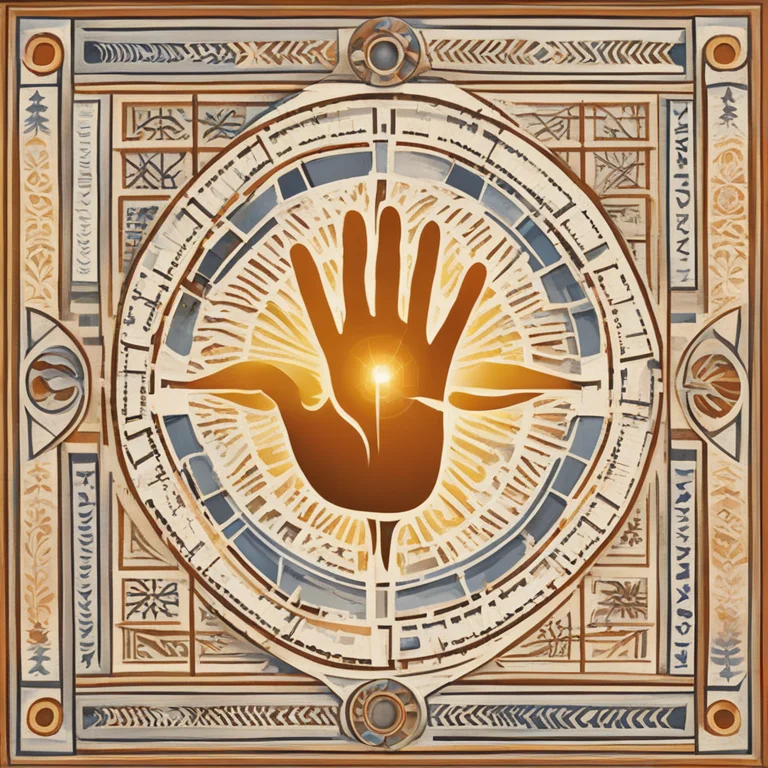
The Essence of Palmistry: Hand Analysis Handbook
Discover the ancient practice of palmistry, where hand lines and shapes reveal personal insights. Learn about its history, methods, and relevance in modern times.
article by Nora Pennington
Introduction to Palmistry
Palmistry, also known as chiromancy or cheiromancy, is the art of analyzing an individual's palms to interpret personality traits, potential life paths, and future trends. The roots of palmistry extend back to ancient civilizations, where it was employed as a form of divination. Despite the rise of technology and new forms of personality assessment, palmistry remains a sought-after practice for those looking to delve into the mysteries of their personal narratives and make meaningful decisions based on the lines and shapes found in their hands.
A Brief History
The history of palmistry traces back thousands of years, with evidence of this practice in a variety of ancient cultures, including India, China, and Egypt. Over the centuries, it spread across the world, adapting and evolving with the influences of different philosophical schools and cultural interpretations. In recent years, palmistry has witnessed a resurgence in popular culture, integrating contemporary psychological theories and marrying ancient symbols with modern self-awareness techniques.

The Lines of Life
The core of palmistry lies in the examination of the hand's lines, each believed to hold specific meanings. The major lines include the heart line, head line, life line, and fate line. These lines are thought to reflect an individual's emotional stability, intellectual capacity, vitality, and life changes, respectively. Advanced palm readers also look at secondary lines and markings for additional insights, catering their interpretations to the evolving nature of contemporary society and its challenges.

Hand Shapes and Elements
Aside from lines, palmists consider the overall shape of the hand, which can be classified into the four elements: earth, air, water, and fire. Each element represents a different temperament and set of characteristics. Earth hands denote practicality, air hands symbolize intellectual aptitude, water hands suggest emotional depth, and fire hands are associated with enthusiasm and leadership. Understanding these elements is crucial as they form the foundational personality traits from which a palm reader begins their analysis.

The Modern Palmistry Practice
While traditional palmistry has its roots in mystical practices, modern palmists often incorporate contemporary knowledge from psychology and neuroscience to provide more grounded interpretations. Moreover, the rise of digital media has made palmistry more accessible, with online courses and virtual readings widening its appeal. Professional palmists now often take a holistic approach, considering both the spiritual and scientific perspectives to offer a more nuanced and personal reading.
Palmistry's Place in Today's World
In our fast-paced, data-driven world, palmistry offers a personal touch, a moment of introspection in the hustle of daily life. It's not so much about predicting the future, but rather about reflection and understanding oneself better. As the movement towards mindfulness and personal well-being grows, so does the popularity of palmistry as a tool for self-discovery and psychological insight.
Published: 1/11/2024
Modified: 1/12/2024
More predictions
Come back here soon to learn more about yourself and your future


Guide to Palm Reading: Lines and Interpretations
Discover the ancient art of palmistry with our concise guide to reading palms and understanding their meaning for life and personality insights.


Jupiter Mount & Palmistry:Exploring The Significance
Delve into the secrets of the Jupiter mount on your palm and discover how it reflects your leadership and ambition.


The Impact of the Jupiter Mount in Palmistry
Discover the impact of the Jupiter Mount on your life through palm reading. Learn about its meaning and significance in palmistry.